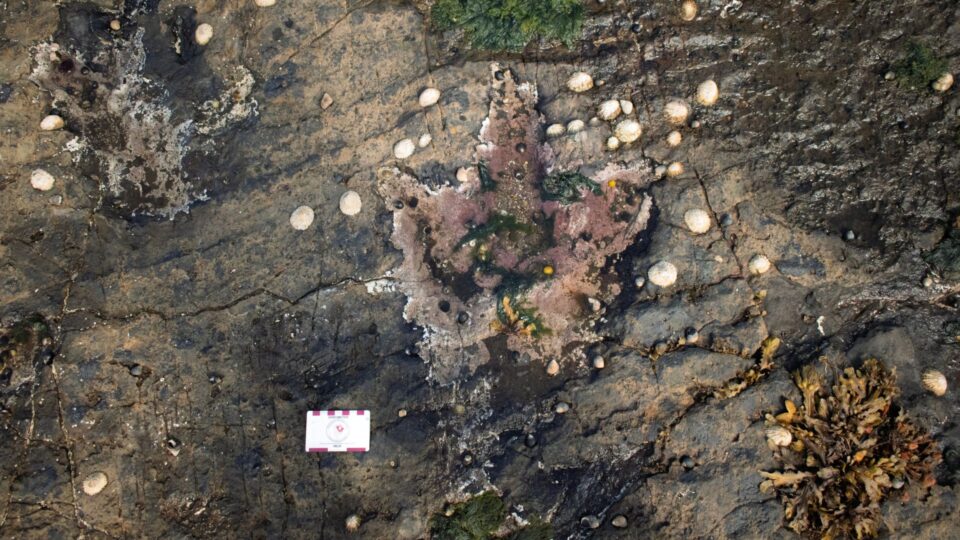167 million years ago, dinosaurs strolled through lagoons, leaving behind evidence that has endured through time.
A Middle Jurassic scene is preserved in the form of 131 footprints, pressed into the sands of a long-lost shallow freshwater lagoon.
The University of Edinburgh paleontologists unearthed this treasure trove of dinosaur footprints at a site called Prince Charles’s Point on the Isle of Skye, Scotland.
Interestingly, this site also holds historical significance. Bonnie Prince Charlie, fleeing after the Battle of Culloden in 1746, is believed to have hidden at this location.
His escape route may have unknowingly crossed this site marked by the fossilized steps of giant dinosaurs.
Who left the tracks?
With 131 footprints, the site is considered a major dinosaur tracksite within Scotland.
The team used a drone to capture numerous overlapping images of the shoreline. These images were then used to create digital 3D models of the dinosaur footprints.
In terms of size, the fossilized dinosaur footprints range from 25-60cm (9 to 23 inches).
The analysis revealed that two main types of dinosaurs left their mark here.
First, there were the large, meat-eating, two-legged theropods that left behind three-toed tracks. Then there were the sauropods, massive, long-necked herbivores, leaving round, tire-sized prints.
Based on UK skeletal remains, the team believes these tracks were likely made by dinosaurs similar to Megalosaurus (theropod) and Cetiosaurus (sauropod).
“The footprints at Prince Charles’s Point provide fascinating insight into the behaviors and environmental distributions of meat-eating theropods and plant-eating, long-necked sauropods during an important time in their evolution,” the researchers noted in the press release.
Interestingly, the footprints are not isolated; they are found in series, indicating the dinosaurs’ movement. Some of these trackways stretch over 39 feet (12 meters), showing dinosaurs casually walking, milling about the lagoon.
The footprints reveal that these dinosaurs frequented the area when it was a freshwater lagoon. The overlapping footprints point to a scenario where dinosaurs were drinking at the lagoon at roughly the same moment.
The distance between the footprints indicates that the dinosaurs were moving at a leisurely, slow pace.
The overall pattern suggests that the dinosaurs were not engaged in any specific activity, such as hunting or migrating, but were simply wandering around.
High number of theropods
These footprints offer a unique glimpse into the lives of dinosaurs in Scotland, revealing their behavior and preferred environments.
Notably, this site reveals a much higher concentration of theropod footprints compared to other similar fossil locations.
This disproportionate representation of theropod tracks suggests that the environmental conditions of this specific ancient lagoon may have differed from other comparable sites.
This difference could be attributed to factors like prey availability, water depth, or other ecological factors that attracted a greater number of theropods.
“On Skye, these dinosaurs clearly preferred shallowly submerged lagoonal environments over subaerially exposed mudflats,” the team noted in the press release.
Moreover, it reinforces the established understanding that sauropods were common inhabitants of Scottish lagoon environments during the Jurassic period.
The findings were published in the journal PLOS One.
